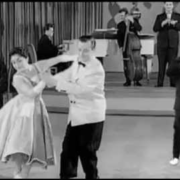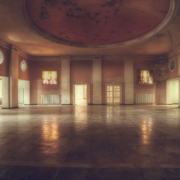Lipsi, when DDR created a new dance to stop rock’n’roll
Listening new rock bands was actually impossible for youngsters who lived in Soviet bloc
All western bands were strongly censored by regime, above all rock’n’roll was not tolerated at all. Although listening to Elvis, Rolling Stones or Beatles was very hard matter, the ban was bypassed and their music albums came into DDR, getting really famous. Soviet party’s chiefs worried about the fact that youngers were listening this music, so they decided to think a new dance up. The newborn dance was created to be catched on them in order to eclipse the success of rock’n’roll: Lipsi was born.
Soviet reply to decandent and vulgar Western rock’n’roll
Soviet leaders felt disconcerted by dances which spread out since the end of 50s. They were the opinion that Elvis’ basin movements were almost pornographic, and besides, a tête-à-tête dancing between teenagers was a not- well-identified danger for social order. In order to prevent that this new kind of music could keep influence on DDR teenagers, Soviet leaders were determined to compose a new music and dance, both were suitable to the (chaste) education of Socialist youngsters. About Lipsi, René Dubianski composed its music, whereas dancing was created by Christa and Helmut Seifert dancers. As reported by J.Elke Ertel in his book entitled “Walled In – A West Berlin girl’s journey to freedom“, the name was not choosed by chance. All three authors came from Lipsia which was obviously situated in Soviet bloc. Adapting the latin name of the city, Lipsiens, they created an original name: without good reason, they actually thought that the final “i” would have given an “american” and new-fashioned guise, more fashionable for teenagers. Once music was composed and dance was created, the strict Soviet censorship let pass it: challenge against capitalist West could be begin on the dancing floor too.
A guidelines to dance Lipsi, for perfect party in Eastern German style
Surely, you are now curious to know how to dance Lipsi that is essential to organize a DDR themed party. The lyrics, composed by Dublansky and reported by Anna Funder in C’era una volta la DDR, said: «These days all the youngsters dance Lipsistep, just it; These days all of them want to learn Lipsistep: it is hip rhythm! Rumba, Boogie and Cha Cha Cha are old-fashioned; out of the blue, a new rhythm has come from nowhere and it is about to be still». The piece is in 6/4, as it was a speedy waltz. The Seiferts created a very simple choreography which is quite similar to a rumba blended with waltz as defined by Ertel, so as the youngs could learn quickly. The most curious aspect was that any kind of basin movements was strictly forbidden, only chest movements were permitted. Dancers almost never moved close to each other, staying at safe distance: all that contributed to create an “innocent” choreography. But even though it was beaten the drum for it, Lipsi didn’t hit the big time. Socialist teenargers continued to prefer Western rock’n’roll with its own unfettered rhythm and, listening to Lipsi, we can’t argue with them. If you want to learn more about history of this questionable dance and everyday life during those years, you could visit DDR Museum in Karl-Liebknecht-Strasse, Berlin.
Cover image: A Lipsi step – Screenshot from Youtube’s video



